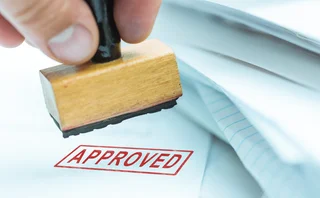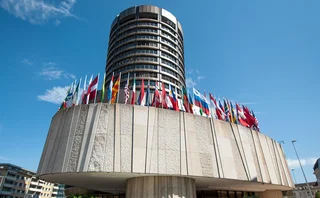
IndyMac losses put more strain on FDIC funds
Yesterday's sale of failed California mortgage lender IndyMac has left the US Federal Deposit Insurance Corporation (FDIC) with a $10.7 billion bill - weakening its reserves further even as the list of failed banks requiring support continues to lengthen.
The FDIC sold IndyMac for $13.9 billion to OneWest, a Californian savings bank backed by a group of private investors. IndyMac originally fell under FDIC control on July 11 last year, in the second largest US bank failure since the FDIC was set up in 1934. "The bank relied heavily on higher-cost, less stable, brokered deposits, as well as secured borrowings, to fund its operations and focused on stated income and other aggressively underwritten loans in areas with rapidly escalating home prices," the FDIC said earlier this year.
But the cost of salvaging IndyMac has almost tripled from the FDIC's optimistic original estimate. In July, the FDIC said it might be able to repair and re-privatise the bank for as little as $4 billion. Even in January, when the OneWest deal was agreed, the FDIC said its Deposit Insurance Fund would only have to pay "between $8.5 billion and $9.4 billion".
The guarantor recently announced its "problem list" of banks in significant danger now includes 252 names as of the end of 2008, up from only 171 at the end of September 2008, with a total of $159 billion in assets - the deposit insurance fund fell by 45% over the last three months of the year to just $19 billion, with another $22 billion set aside for expected losses this year.
Speaking yesterday in front of the Senate banking committee, Arthur Murton, the FDIC's director of insurance and research, said bank failures had reached their highest level since 1993; 25 failed in 2008 and another 17 have failed so far this year, he said. Despite increases in the fees paid by insured banks, the fund's reserve ratio could take up to seven years to return to its target of 1.15%, he said.
With its resources severely strained, Murton called for Congress to expand the FDIC's ability to borrow from the US Treasury. At present it cannot borrow more than $30 billion - a level set in 1991 - and Murton said a permanent increase to $100 billion, and a temporary increase to $500 billion (with consent from the Treasury and the Federal Reserve) was important "to meet all contingencies" and "to demonstrate the FDIC's ability to immediately access significant liquidity even in high-stress scenarios".
Murton also criticised laws that prevent FDIC from building up the fund during prosperous times: once the ratio rises to 1.5%, the FDIC is not permitted to collect any further fees. During the decade of calm markets from 1996 to 2006, this meant the FDIC collected few or no fees, leaving it underprepared for the crisis. Murton warned: "These restrictions on the size of the DIF will limit the ability of the FDIC to rebuild the fund in the future to levels that can offset the pro-cyclical impact of assessment increases during times of economic stress," and called on Congress to revisit this limit.
See also: FDIC: 252 US banks now at risk
FDIC prepares to sell off IndyMac
Regulators shut down IndyMac
Only users who have a paid subscription or are part of a corporate subscription are able to print or copy content.
To access these options, along with all other subscription benefits, please contact info@risk.net or view our subscription options here: http://subscriptions.risk.net/subscribe
You are currently unable to print this content. Please contact info@risk.net to find out more.
You are currently unable to copy this content. Please contact info@risk.net to find out more.
Copyright Infopro Digital Limited. All rights reserved.
You may share this content using our article tools. Printing this content is for the sole use of the Authorised User (named subscriber), as outlined in our terms and conditions - https://www.infopro-insight.com/terms-conditions/insight-subscriptions/
If you would like to purchase additional rights please email info@risk.net
Copyright Infopro Digital Limited. All rights reserved.
You may share this content using our article tools. Copying this content is for the sole use of the Authorised User (named subscriber), as outlined in our terms and conditions - https://www.infopro-insight.com/terms-conditions/insight-subscriptions/
If you would like to purchase additional rights please email info@risk.net
More on Regulation
FRTB start dates must align globally, says European Commission
Lawmaker could trigger delay to market risk rules in Europe if US implementation drags on
Fed green lights more capital relief trades
Five US banks authorised to issue repeat credit-linked notes backed by financial guarantees
Basel III endgame: why moving fast might prove better for banks
Republicans are pushing for reproposal, but a rapid finalisation may prove less far-reaching
Isda pushes to ‘decouple’ Simm calibration from model changes
Emir 3.0 prompts effort to separate risk-weight revisions from methodology updates
Basel war on window-dressing may smooth liquidity, at a price
Changes to G-Sib charge could curb year-end repo volatility, but also cut balance sheet capacity
One year on, regulators still want a cure for bank runs
Broad support for higher outflow assumptions on uninsured deposits, but that won’t save insolvent banks
Watchlist and adverse media monitoring solutions 2024: market update and vendor landscape
This Chartis report updates Watchlist monitoring solutions 2022 and focuses on solutions for sanctions (name and transaction) screening and monitoring adverse media and its related elements
Basel Committee reviewing design of liquidity ratios
Focus on LCR and NSFR after Silicon Valley Bank and Credit Suisse, but assumptions may not change
Most read
- Too soon to say good riddance to banks’ public enemy number one
- Breaking out of the cells: banks’ long goodbye to spreadsheets
- Basel III endgame: why moving fast might prove better for banks







